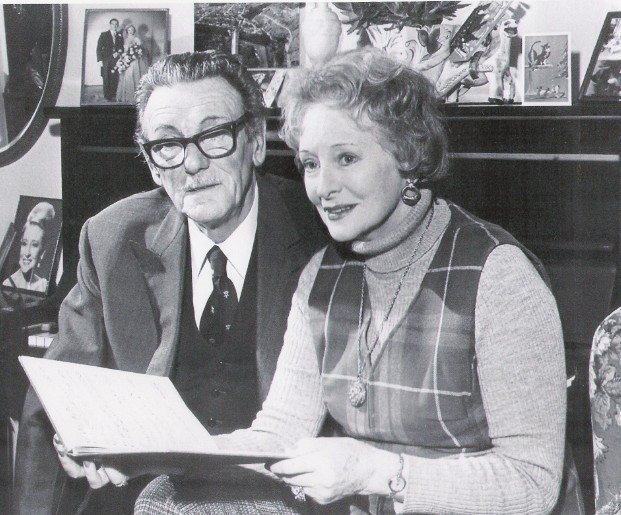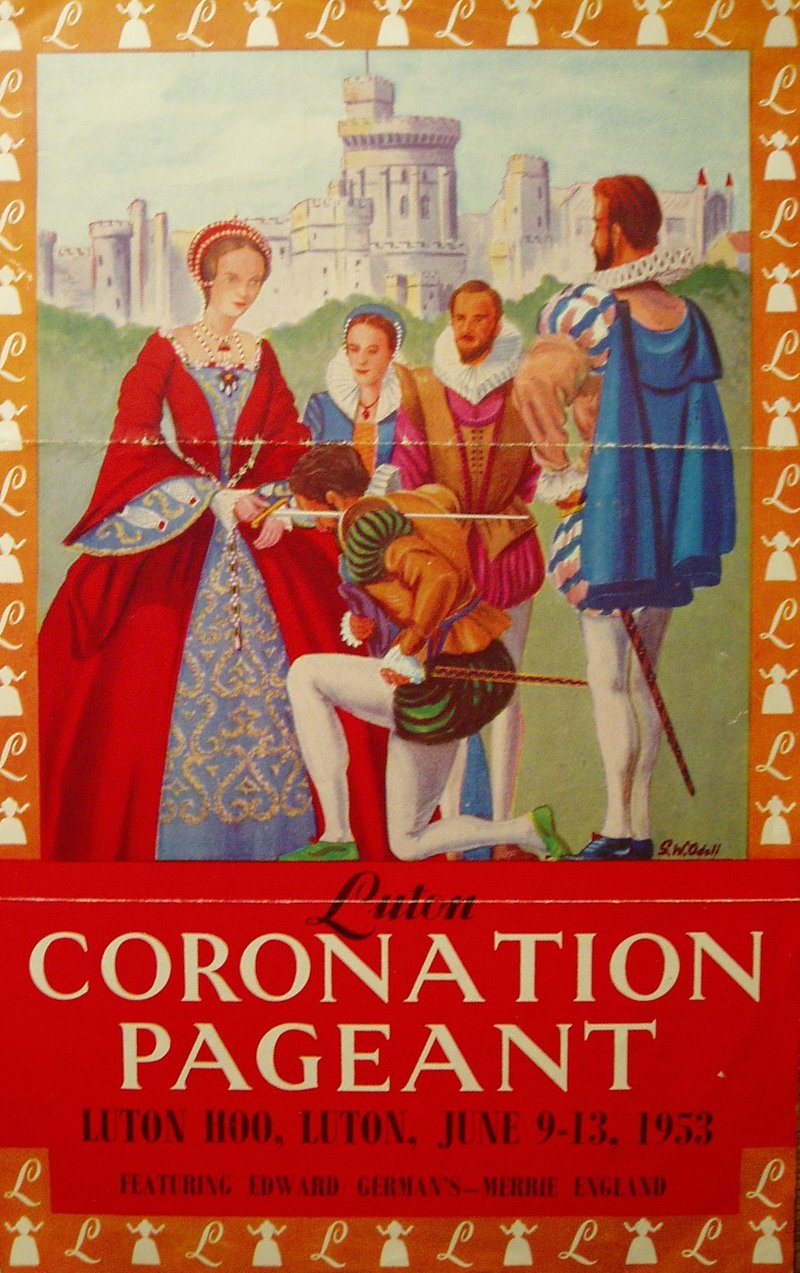The Luton Coronation ‘Pageant’, 1953
Until recently I had never heard of the Luton Coronation Pageant of 1953. A correspondent from Australia, who got in touch with us via the website, sent me various pageant souvenirs and ephemera, including a four-page souvenir programme and a flyer for the event, held in the grounds of Luton Hoo, a large country house to the south of the town.
This was a very large event: there was seating for more than 14,000 people, and standing room for a further 2,000, and the pageant ran for five successive nights, with an extra matinee on the Saturday. Parking for 8,000 vehicles was available. The cast itself numbered more than 1,000, including 200 dancers and fifty men on horseback. The pageant was produced by Harry Powell Lloyd of the Old Vic and Sadler’s Wells, who had some pageant experience already, having produced a ‘Merrie England’ pageant at the open-air theatre in Scarborough.
This was not a historical pageant in the way that our project understands it. In fact, although called a ‘pageant’, this was in fact an outdoor production of Edward German’s comic opera Merrie England, first performed in 1902. The opera is a love story at the court of Elizabeth I, featuring Bessie Throckmorton and Sir Walter Raleigh
Within the opera there are two plays-within-the-play. The first is ‘St George and the Dragon’ – the dragon was played by two human actors – and in the second the cast re-enacts the wedding of Robin Hood and Maid Marian. Key historical figures depicted in the opera itself include Elizabeth, Shakespeare and the Earl of Essex, as well as the lead characters. At Luton, additional characters included Britannia and John Bull, as well as a bear (played, like the dragon, by a human actor).
At Luton the stars were two professional singers, the husband-and-wife team of Webster Booth and Anne Ziegler, famous for their duets.

Above: Webster Booth and Anne Ziegler, stars of the Luton pageant, pictured in 1980.
The fact that this outdoor opera was called a ‘pageant’ suggests the popularity of the pageant form, and a widespread understanding of what a pageant did: that is, through words or music or both, depict fictional versions of real events from the past. Those who watched this opera – perhaps almost 100,000 of them – were in no doubt that what they’d seen was a historical pageant.
The stage and seating area can be seen here:
http://www.britainfromabove.org.uk/image/eaw049889

Above: Flyer for the Luton Coronation Pageant.
Mark Freeman
